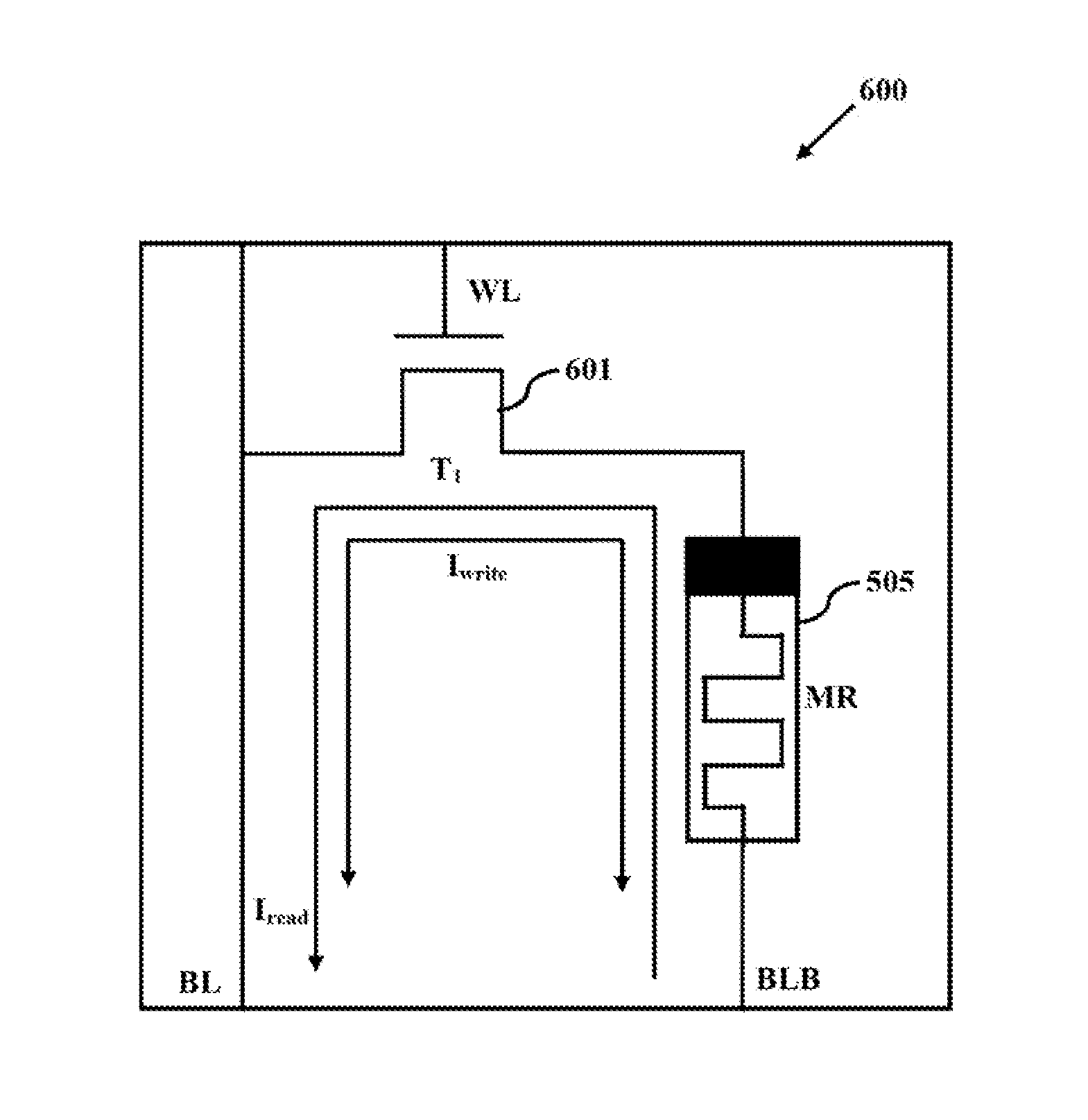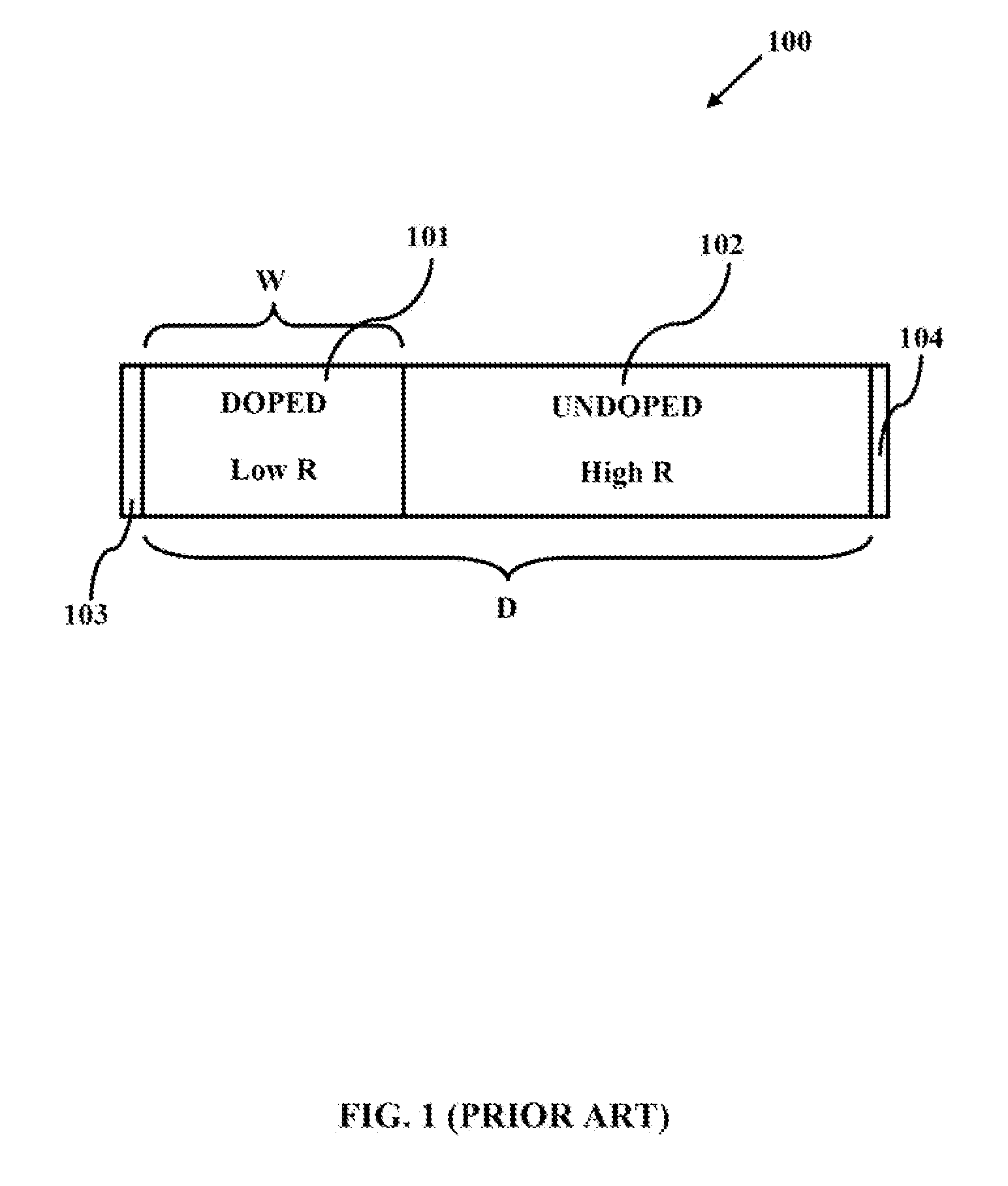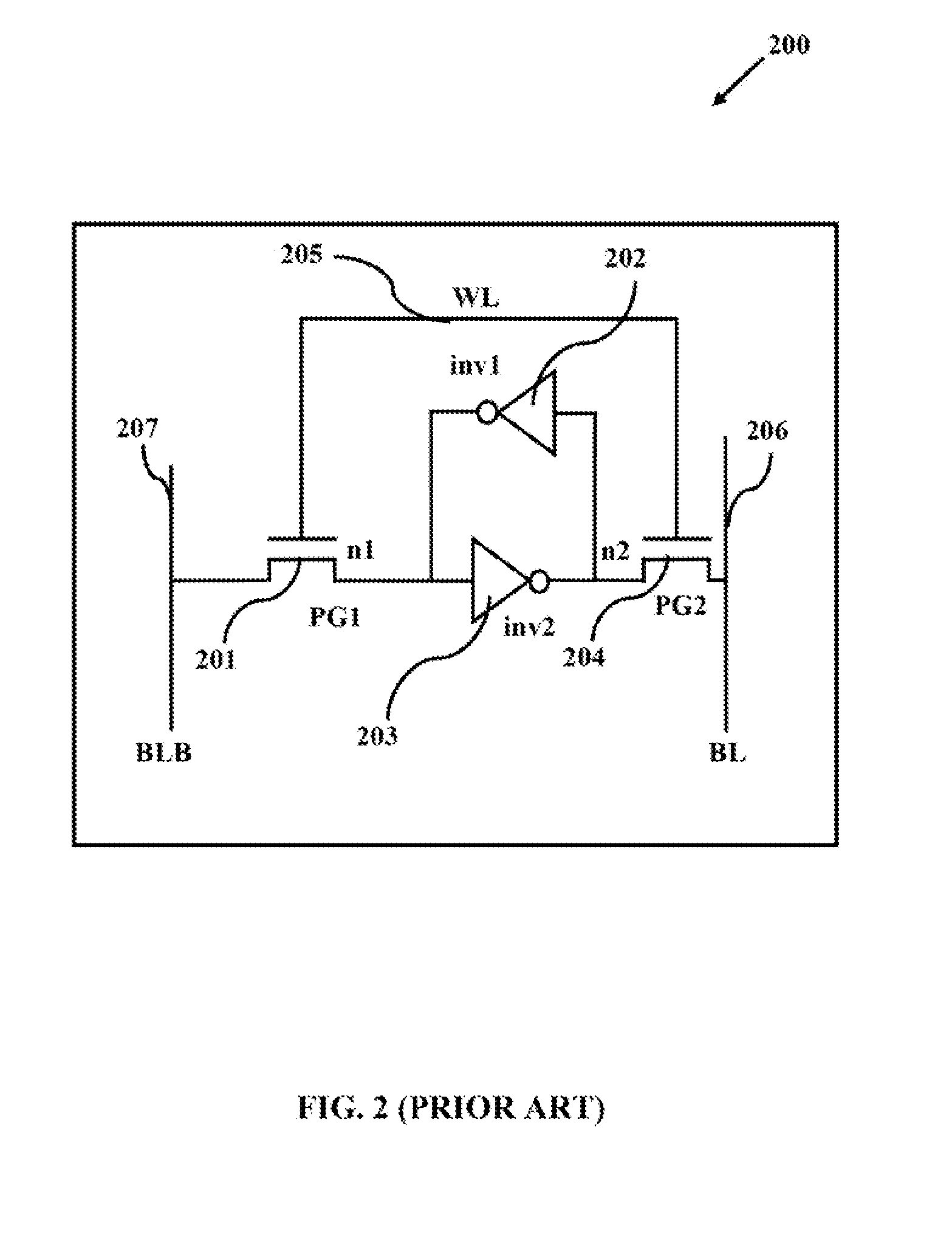System and a method for designing a hybrid memory cellwith memristor and complementary metal-oxide semiconductor
a technology of complementary metal-oxide semiconductor and memory cell, which is applied in the field of memory devices, can solve the problems of many new design challenges, the progress of utilizing other emerging magnetic-based memory technologies, and the main memory of high density features also faces challenges, so as to minimize the drift of state and minimize the drift
- Summary
- Abstract
- Description
- Claims
- Application Information
AI Technical Summary
Benefits of technology
Problems solved by technology
Method used
Image
Examples
Embodiment Construction
[0015]The primary object of the embodiments herein is to provide a method and a system for designing an improved hybrid memory cell and a hybrid memory array architecture using a memristor and a CMOS technology.
[0016]Another object of the embodiments herein is to provide a method and a system to integrate a memristor to the existing integrated circuits (ICs) technologies for an efficient operation.
[0017]Yet another object of the embodiments herein is to provide a hybrid memory cell of memristor and CMOS devices with a high density and a low overall power consumption characteristics.
[0018]Yet another object of the embodiments herein is to provide a control logic for a read and write operation for maximizing an efficiency of a memory cell with a low power consumption.
[0019]These and other objects and advantages of the embodiments herein will become readily apparent from the following detailed description taken in conjunction with the accompanying drawings.
SUMMARY
[0020]The various embo...
PUM
 Login to View More
Login to View More Abstract
Description
Claims
Application Information
 Login to View More
Login to View More - R&D
- Intellectual Property
- Life Sciences
- Materials
- Tech Scout
- Unparalleled Data Quality
- Higher Quality Content
- 60% Fewer Hallucinations
Browse by: Latest US Patents, China's latest patents, Technical Efficacy Thesaurus, Application Domain, Technology Topic, Popular Technical Reports.
© 2025 PatSnap. All rights reserved.Legal|Privacy policy|Modern Slavery Act Transparency Statement|Sitemap|About US| Contact US: help@patsnap.com



